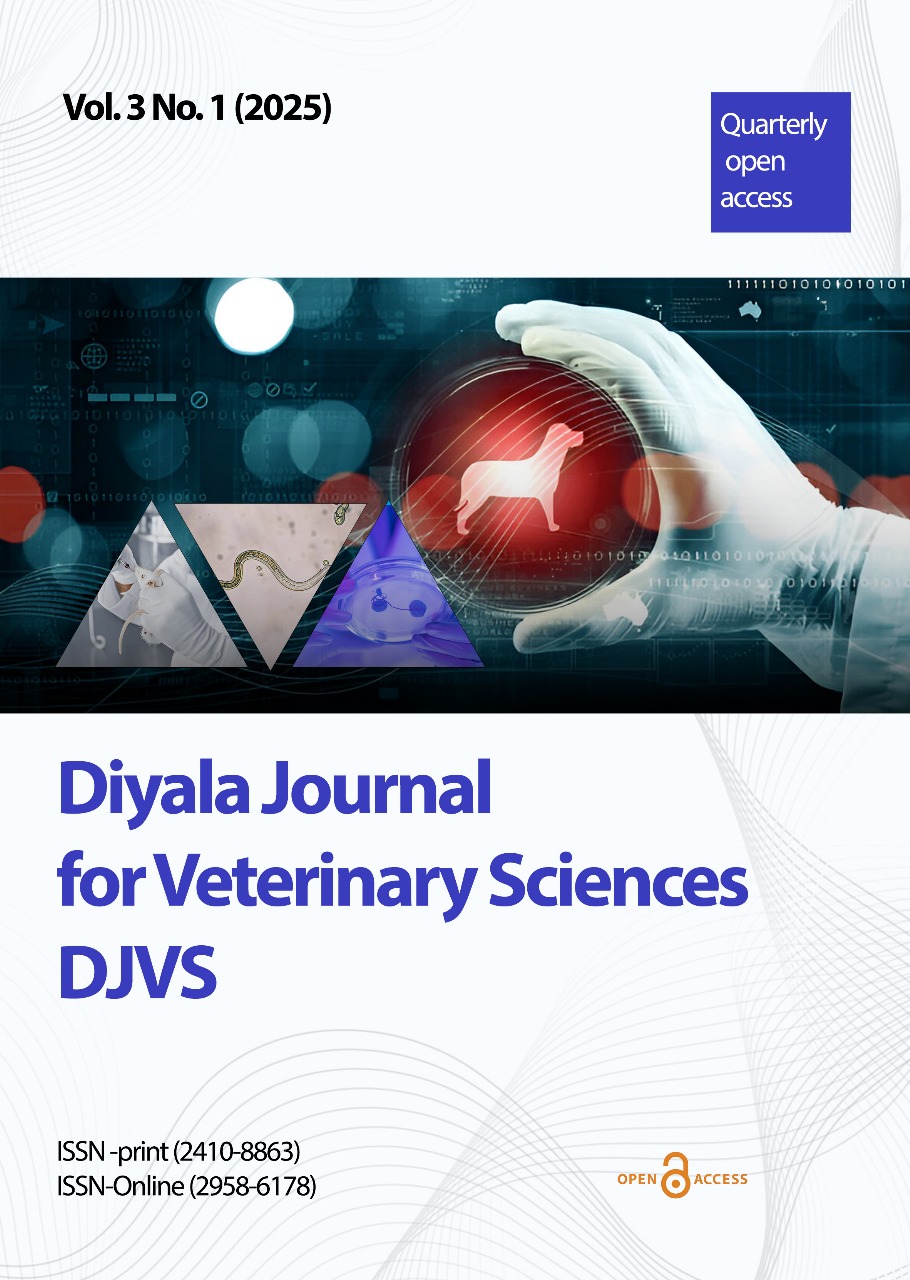Prevalence of blaSHV, blaNDM beta-lactamase genes using multiplex PCR in clinical isolates of Proteus mirabilis
Prevalence of blaSHV, blaNDM beta-lactamase genes using multiplex PCR in clinical isolates of Proteus mirabilis
DOI:
https://doi.org/10.71375/djvs.2025.03204Keywords:
P. mirabilis, ESßL, Metallo-ßL, blaSHV, blaNDM, multiplex PCRAbstract
Proteus mirabilis is a Gram-negative bacterium that cause various diseases in medical healthcare situations. This study aimed to detect P. mirabilis with multi drug resistance by morphological and biochemical methods and to determine some virulence factors by phenotype methods as well as detecting of genes encoding antibiotic resistance including (blaNDM and blaSHV) through multiplex PCR, in clinical samples. 180 samples from different clinical sites including (urine, discharge, otitis media, wounds, and vaginitis) were collected from both males and females in different ages during September 2024 to December 2024 from Baquba Teaching Hospital and Al-Batoul Maternity and Children's Hospital in Diyala Governorate/Iraq. Results revealed that 20 (18.18%) isolates of P. mirabilis were obtained. In this study, a higher rate of positive isolates was recorded in urine samples (65%). Also, 45% of isolates were ESBL producers and 30% were Metallo BL producers. The most effective antimicrobial agents against all isolates are meropenem followed by Amikacin. Resistant of P. mirabilis for many antibiotics, especially Trimethoprim and ampicillin. Molecular detection of beta lactamase genes revealed that only 6 (30%) had blaSHV gene while blaNDM only in 7 (35%) of isolates.
Downloads

Downloads
Published
How to Cite
Issue
Section
License
Copyright (c) 2025 Najaat Ahmed Mohammed

This work is licensed under a Creative Commons Attribution-NonCommercial 4.0 International License.


